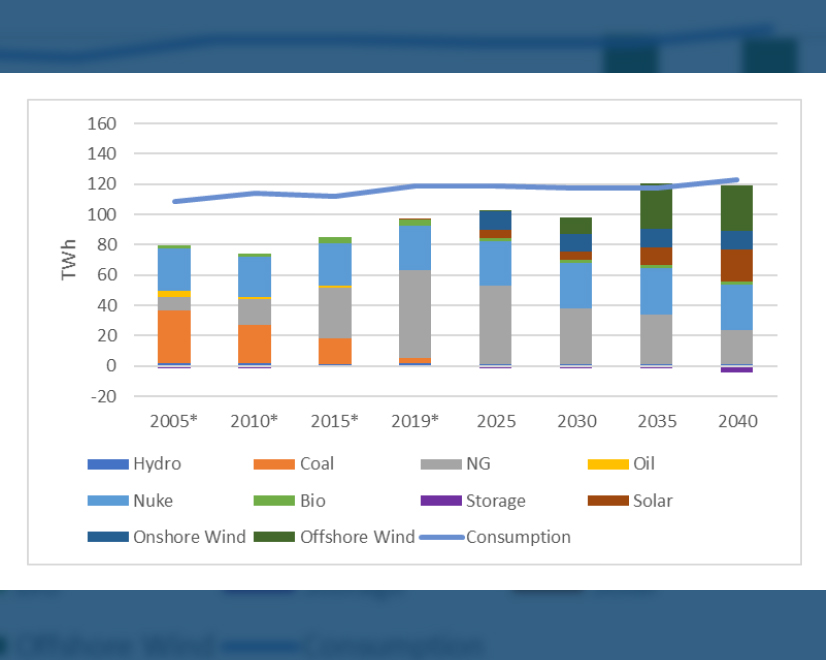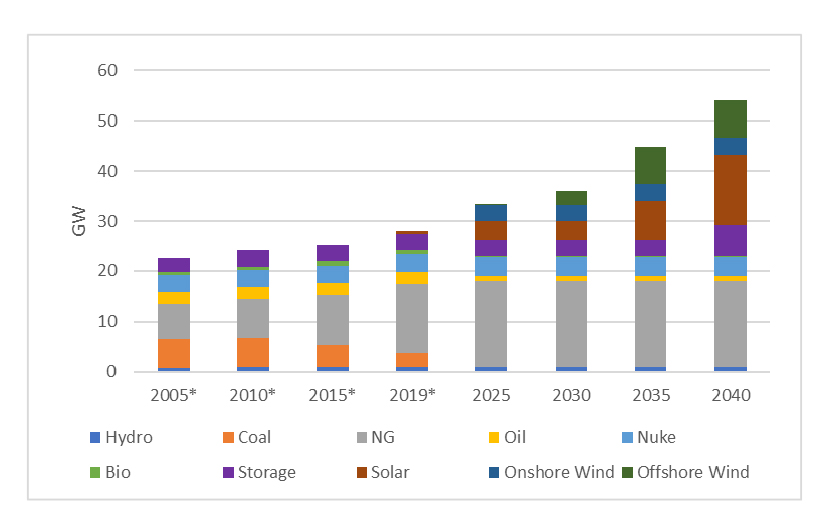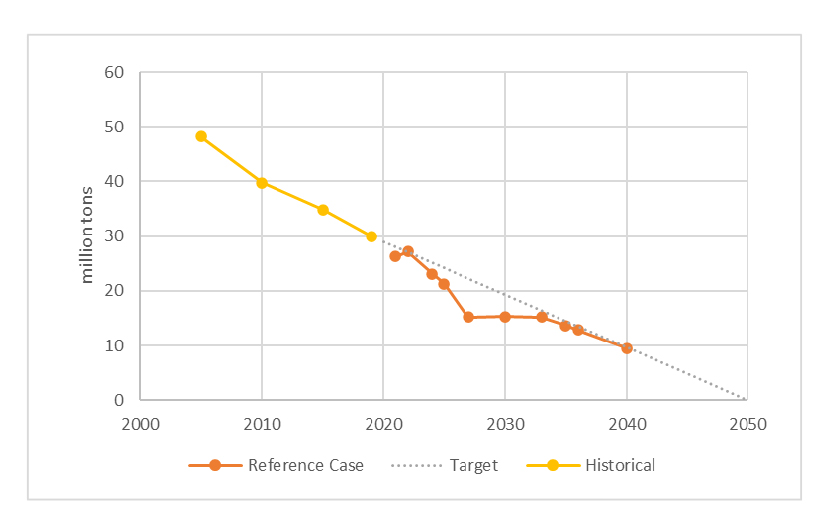
Virginia is on track to meet its goal of zeroing out carbon emissions from electricity generation across the state by 2050, as set out in the Virginia Clean Economy Act (VCEA) of 2020, according to a preliminary report presented to the Virginia Council on Environmental Justice on Aug. 5.
“By 2040, wind and solar end up constituting about half of all Virginia’s electricity generation, and zero-emissions electricity generation, including nuclear, is much more than half,” said Maya Domeshek, a research analyst with Resources for the Future (RFF), a nonprofit research group that co-authored the report. “Coal generation continues to fall rapidly and is almost gone by 2030.”
Domeshek added that renewable energy capacity in Virginia will grow along with the VCEA’s capacity targets. Natural gas generation will remain part of the state’s energy mix through 2040 but will be used less, she said.

“The VCEA seems to be getting us where we need to go through 2040,” Domeshek said, noting that carbon emissions from electricity generation will drop to 10 million tons at that time, compared to about 27 million tons today.
The figures Domeshek and other researchers presented to the council were built on a preliminary “reference case” based on targets in the VCEA. These findings will in turn be used as the basis of a more comprehensive report — to be delivered to the state legislature by Jan. 1, 2022 — on how Virginia can achieve its zero-carbon goals at the least cost to ratepayers,
“The report will contain recommendations to the General Assembly as to whether to permanently ban construction of new fossil fuel-based generating plants,” said Carrie Hearne, associate director for energy equity at the Virginia Department of Mines, Minerals and Energy (DMME). “DMME is taking the lead on the project by coordinating research, conducting key consultations, engaging the public, drafting recommendations and working with DEQ [Virginia Department of Environmental Quality] … to finalize the submission to the General Assembly.”

In addition to RFF, other partners in the project include the Virginia State Corporation Commission, the University of Virginia’s Weldon Cooper Center for Public Service and the Georgetown Climate Center at Georgetown University Law School. Additional public comment will be gathered in the coming weeks.
However, the group will not be addressing the specific concerns of the Virginia Council on Environmental Justice until next year. Under the VCEA, beginning on Sept. 1, 2022, and every three years thereafter, DMME, in consultation with the council and others, is to “determine whether implementation of the VCEA imposes a disproportionate burden on historically economically disadvantaged communities.” A final report covering such issues is due to the General Assembly by Jan. 1, 2023, and every three years thereafter.
Getting to Zero Carbon
The VCEA “greatly expands the construction of solar, onshore wind, offshore wind and energy storage, with 35% of these facilities owned by entities other than Dominion [Energy],” Franz Litz of the Georgetown Climate Center said. The law also establishes a schedule for retiring all carbon-emitting generation by 2045 and a standard of 100% renewable electricity sources by 2045 for Dominion and by 2050 for Appalachian Power.
It also contains an energy efficiency standard for all customers, growing to 5% per year for Dominion and 2% per year for Appalachian Power by 2025, after which efficiency standards will be adjusted every three years.
The report team started with these targets and standards and developed a computer model, dubbed Haiku, “designed to simulate the electricity grid, including emitting and non-emitting power plants, transmission lines, consumers and industry, in the future,” Litz said. The model also accounts for the number of plants that will be built, how many will be retired, and fuel and maintenance costs, based on a least-cost model for the U.S. as a whole.
The reference case the team presented on Aug. 5 analyzed Virginia’s electricity generation through 2040. But according to Domeshek, “sensitivity cases” are also being developed to integrate evolving natural gas prices, varying levels of demand for electricity, and differing federal policies into the model. The team will also work on “policy cases,” to analyze any possible additional measures that might be necessary to achieve the VCEA’s zero-by-2050 emissions goal.
Domeshek said the reference case factors in the Regional Greenhouse Gas Initiative (RGGI), which now includes 12 states, including Pennsylvania. The analysis shows the VCEA helping the entire RGGI region achieve its cap on carbon emissions, if extended at the current pace beyond 2030, a year that is currently the limit of the coalition’s goal setting.
“The VCEA is really positioning Virginia well for those later reductions, and maybe Virginia could even do more than just those 3% reductions per year indefinitely,” Litz said.
By the end of September, the modeling team will complete the sensitivity analysis and evaluation of other scenarios to develop policy options for possible inclusion in the report. Then the Weldon Cooper Center for Public Service will take the lead in completing a draft report for DMME, which in turn will report the results and recommendations to the General Assembly.
“This is a work in progress and will be a work in progress for the next 30 years,” said Bill Shobe of the University of Virginia, who is also on the modeling team. “But the pathway is starting to be clear.”


